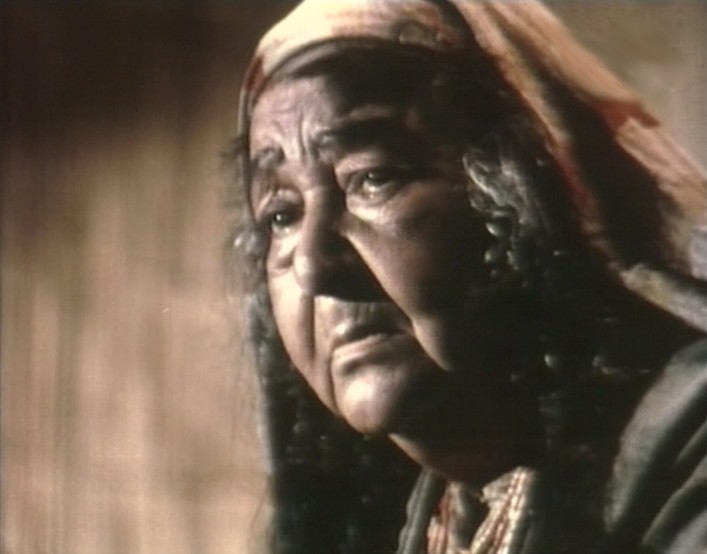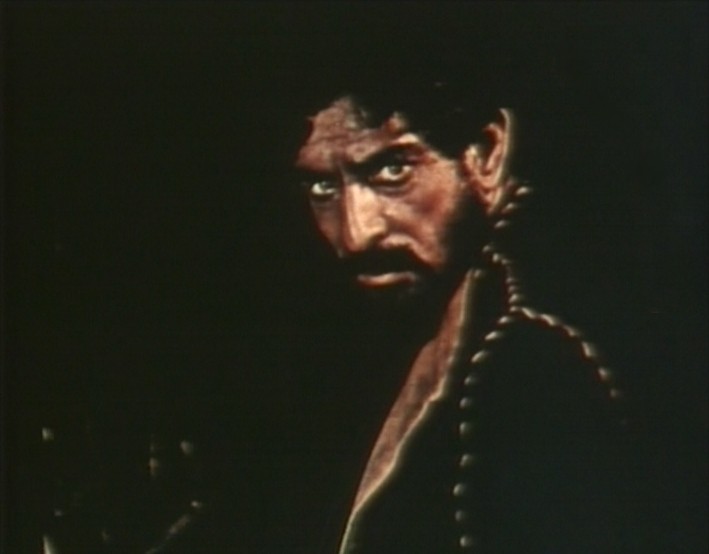Romanis in Ukrainian Literature: How Mykhailo Kotsiubynskyi described them
Hitsu, the old Gypsy woman, Radu, and Mariutsa are main characters of Dorohoiu Tsinoiu ("At a Heavy Cost") a novel by Mykhailo Kotsiubynskyi, a maestro of psychological prose. Dorohoiu Tsinoiu is considered to be a classic of Ukrainian literature telling us the story of the times when Danubian Sich was liquidated and corvée was instituted in Ukraine. He wrote this novel from 1899 to 1901. One of the curious details related to this literary work is the fact that Mykhailo Kotsiubynskyi introduced Romani characters into it—as principal characters, by the way!
We may assume that the idea to write this work came to Mykhailo Kotsiubynskyi during his stay in Bessarabia. Then, his friends from the Tarasivtsi Brotherhood (a clandestine organisation based in Kharkiv whose members gave an oath on Taras Shevchenko's grave whereby they swore to disseminate Shevchenko's ideas among Ukrainians, by any means—ed.) helped Kotsiubynskyi to become a member of an Anti-Phylloxera Commission combatting viticide in Bessarabia and Crimea. These voyages brought new topics into his creative works. Kotsiubynskyi then started writing about the lives of Moldovan peasants, Crimean Tatars, as well as Romanis whom he spent a lot of time with during his wanders in Bessarabia. Then, he familiarised himself with the everyday life and customs of Romani communities. We may assume—as do literary researchers—that Dorohoiu Tsinoiu was a novel written under the impact of life and traditions of Bessarabian Romanis experienced firsthand by the author.

In the olden days, Romanis settled on the outskirts of villages and sometimes of cities, too. Kotsiubynskyi's characters are not an exception. Along the worndown road used by Danubian peasants to get to Galați in Romania, amid clusters of willow trees, mid common reeds, ensconced itself a Romani settlement, comprised of but three houses—which the author refers to as ‘henneries’. These dwellings had low ceilings and were crooked, made of clay, resembling swallow nests.
So, the plot, by and large, tells us the story of a Romani family. One of the images is an elderly Gypsy woman. Quite curious is the thing that nowhere in the novel is she referred to by name. It seems to be that this was done intentionally, sort of like to highlight the patriarchal nature of the Romani society and a certain discrimination of Romani women. Next go old man Hitsa, their daughter Mariutsa, and their son-in-law Radu. The Romani family's everyday life is poor and modest. «An old horse and a white goat constitute their entire estate», — so is their quotidian existence described by Mykhailo Kotsiubynskyi, a maestro of psychological prose.
“Every day, women harnessed the poor skinny shabby little horse into their two-wheeled carriage, took their canvasses and got into a wooden chest made of old planks which served as a carriage seat, and embarked on a begging tour. They roamed the neighbouring villages, panhandled, asked for a piece of bread, a handful of flour or corn, dug dirty used rags out of waste containers—and then, come evening, they sorted all of their findings out. At eveningtime, there was music, singing, and dancing at Romani settlements...” So described Mykhailo Kotsiubynskyi the everyday life of Romanis. Eventually, the plot of this story unfolds quite profoundly and dramatically, as one of the main topics covered in this novel is the story of Ukrainian peasants fleeing their feudal lords. A Romani settlement thus becomes a shelter for a young couple. Later, however, a conflict arises between them, too, as the love story plot adds to all that. This is how Mykhailo Kotsiubynskyi tells the story of relations between Ukrainians and Romanis in his novel, Dorohoiu Tsinoiu:

«Mariutsa (a young Romani girl - ed.) liked Ostap (one of the main characters of this novel - ed.) so she started hitting on him. Radu (Mariutsa's husband - ed.) was jealous so the two often got into a fight». Or here is another description of a young Romani boy, emphasising his fiery character and noticeable appearance: «His black curls got out of his shabby hat whereas his shining eyes and his smallpox-riddled face was smiling to the young lady…». This is how the author describes Radu. Besides, Kotsiubynskyi comes up with quite a colourful description of the Romani attire. Take the image of Mariutsa and her everyday clothes: «Her slender figure bent like a bow in tension whereas her fantastic blue cloak and her red skirt just could not hide her vivid figure…».
Or let us take a look at these apt and interesting descriptions of a Romani family and of the characters and their behaviour in Mykhailo Kotsiubynskyi's texts:
«All of a sudden, her horrifying yellow witch-like face became kinder, and her grey locks of braids rested calmly on Ostap's chest…».
«An old tall Gypsy man was standing in the doorway... his harsh shaven face shone like copper».
«All of his otherwise heavy movements became light and attractive in this dance ... his entire figure resembled a thin and flexible grapevine».
«Fighting made them horny. They got at each other and fought with their chests like roosters, bit and scratched each other as if they were cats…», — so the author described the relations between Radu and Mariutsa.

By and large, Kotsiubynskyi has formidably succeeded in his effort to emphasise all of the details then present in the traditional culture of Romanis living alongside Ukrainian peasants. It is thus quite possible that they absorbed some portion of Ukrainian everyday life and culture, too—language-wise, for instance. Another curious thing is that Mykhailo Kotsiubynskyi is one of the few Ukrainian writers of the era who spoke Romani—and hence was able to properly immerse into the traditions of Romani communities, to converse with them, and eventually turn them into characters of his works.
Illustrations: screenshot from the movie “At a High Price”
See also
- «Невидимі. Стійкість: минуле і сучасність ромів». Як зрозуміти історію ромів через візуальну культу
- Альфреда Марковська: історія життя і порятунку інших
- «Дивись і не забувай»: 15 років Dikh He Na Bister у Кракові
- ФОТОРЕПОРТАЖ: У Києві відкрили виставку про ромську історію та ідентичність
- «Відновлення пам'яті – роми у Варшавському гетто». Історична екскурсія у Варшаві
- PHOTO REPORT: Events commemorating the victims of the Roma genocide in Babyn Yar
- 2 серпня — Міжнародний день памʼяті жертв геноциду ромів
- Коли допомога — це більше, ніж ваучер
- Антициганізм поруч: як розпізнати упередження у звичних словах і жартах
- Стереотип замість культури: як TikTok спрощує ромську ідентичність